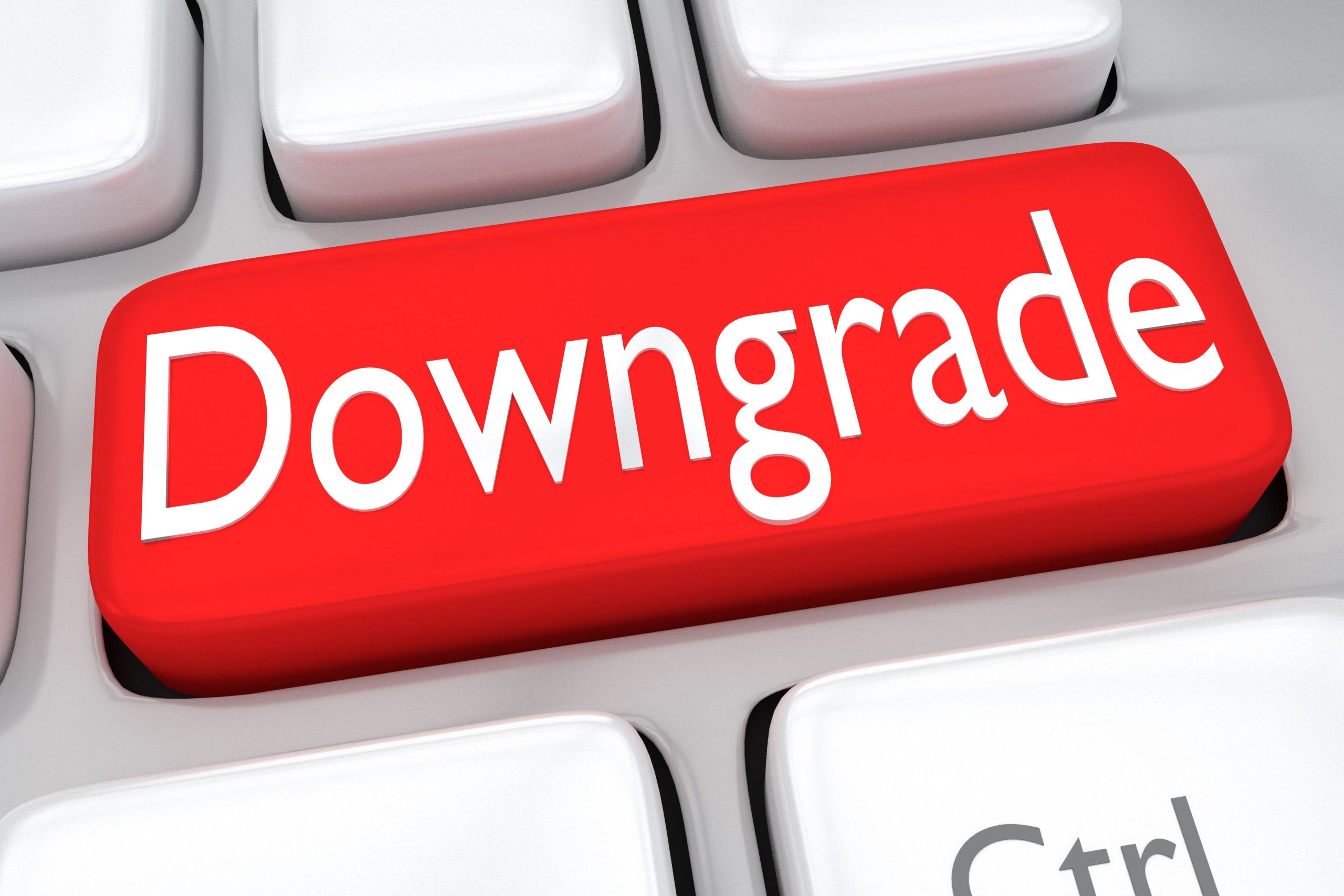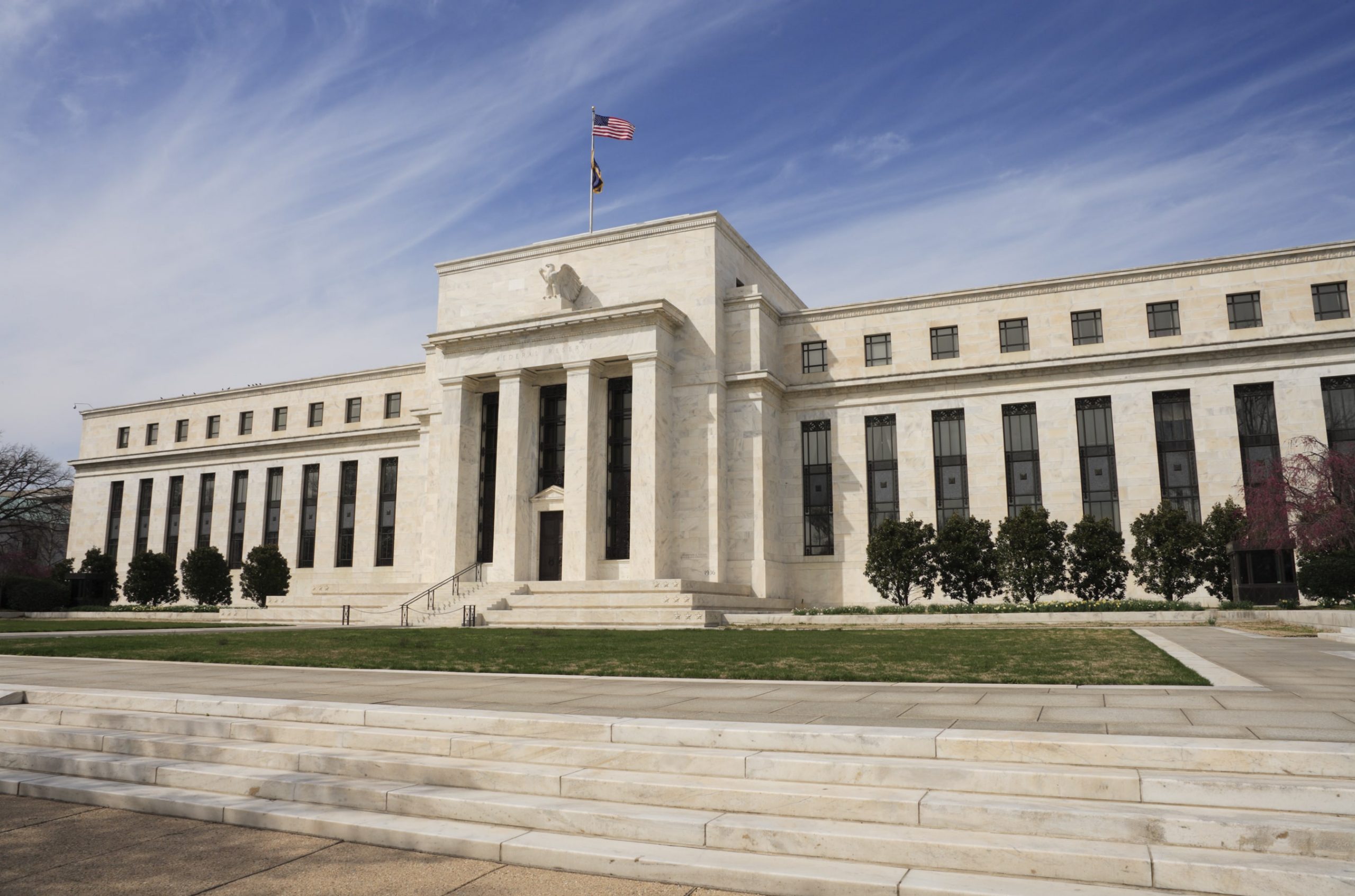This site uses cookies to provide you with a great user experience. By using BondbloX, you accept our use of cookies.
Bond Market News
SMC, Mapletree Launch $ Bonds; Malaysia Downgraded to BBB+; CS Chairman Signals Merger with UBS; Vedanta $ Bonds Fall 8-10% Post Downgrade
December 7, 2020


S&P and Nasdaq ended Friday 0.9% and 0.7% higher led by the energy sector, which was up 5%. UK’s FTSE outperformed in Europe, up 0.9% while the GBP crossed 1.35, its highest since 2018. Non-farm payrolls for November printed at 245k, the lowest in six months vs. expectations of 469k while the unemployment rate fell to 6.7% from 6.9% previously. US 10Y Treasury yields shot up 5bp to 0.97% on Friday as Biden said the “grim” jobs report underscores the need for urgent action leading to expectations of more supply in the US Treasury market coupled with a higher than expected ‘Average Hourly Earnings’ number at 0.3% MoM. The move in Treasuries saw longer-dated bonds of corporates like Apple, Alphabet, Amazon fall over ~1 point with z-spreads also slightly higher. US IG CDS spreads widened 0.1bp while HY tightened 10bp to fall below 300bp. EU main CDS spreads were tighter by 0.8bp while crossover CDS spreads were 9.6bp tighter. Asia ex-Japan CDS spreads were tighter by 0.5bp while Asian equities have opened lower by ~0.4%.
New Bond Issues
- SMC Global tap of 7% PerpNC5 @ 6.625% area
- Mapletree Investments S$ 3yr @ 1.3% area
- Suzhou SND $ 3Y @ 3.1% area
- Logan Group capped $300mn 6NC4 @ 5.35% area

Goldman Sachs raised $2.5bn via a dual trancher. It raised $2.2bn via a 6Y non-call 5Y (6NC5) bond at a yield of 1.093%, 18bp inside initial guidance of T+85bp area. It also raised $300mn via a 6NC5 floating rate note at 0.829%, or SOFR+79bp. The bonds are SEC-registered and have expected A3/BBB+/A ratings.
Jinan Lixia Holding Group raised $300mn via a 3Y bond at a yield of 4.5%, 20bp inside initial guidance of 4.7% area. The bonds were unrated. Jinan Lixia is the exclusive entity for central business district development, infrastructure construction and primary land development for the Lixia district in Jinan, the capital of Shandong province. Proceeds will be used for the construction of its International Financial City, Business Centre and CBD 4-36 projects, comprising office and commercial buildings in Lixia.
New Bond Pipeline
- Laos $ bond
- Vedanta $ bond
- Guangzhou Development District Financial Holdings $ Bond
Rating Changes
- Fitch Upgrades Seazen Group to ‘BB+’ from ‘BB’; Outlook Stable
- Fitch Downgrades Malaysia to ‘BBB+’; Outlook Stable
- Moody’s downgrades Namibia’s ratings to Ba3, maintains negative outlook
- Braskem Idesa Downgraded To ‘B’ From ‘B+’ By S&P And Placed On CreditWatch Negative On Gas Transportation Services Uncertainty
- Fitch Revises Outlook on Toyota to Stable, Affirms Ratings at ‘A+’
- Fitch Revises Outlook on Honda to Stable, Affirms Ratings at ‘A’
- Fitch Revises Arab Tunisian Bank’s Outlook to Negative; Affirms at ‘B+’
- Moody’s changes outlook on Gabon’s rating to stable from positive, affirms Caa1 rating
- Fitch Affirms Sekerbank at ‘B-‘; Removes RWN
- Fitch Removes Mexico City’s Airport Trust Senior Secured Notes’ Rating Watch Negative
- Fitch Affirms Slovenian Intesa at ‘BB+’; Withdraws Ratings
The Week That Was
Issuance volumes picked-up last week after a rather silent week prior to that. US primary market issuance rose to $31.9bn with IG contributing $22.87bn and HY $9.04bn as compared to just $0.4bn and $2.7bn in the prior week. In North America, there were a total of 35 upgrades and 26 downgrades across the three major rating agencies. LatAm saw $3.35bn of new bond deals priced, down 19% on a weekly basis with Brazil’s $2.5bn tap being the most sizeable. EU G3 issuance stood at $25.35bn, up 40% compared to the week before – Credit Suisse and Barclays both issued $1.5bn worth of AT1 PerpNC10 and 4NC3 bonds respectively while Credit Agricole priced a €1bn ($1.2bn) covered social bond. Gulf issuance was muted at $0.02bn. Asia ex-Japan issuance picked up steam last week, topping $10.58bn, the highest in four weeks with Philippines’ $2.75bn dual-trancher the largest deal, followed by HKAA’s $1.5bn PerpNC5.5. Other prominent deals from Asia included China state-owned electricity company China Huaneng’s $1bn dual-trancher and New World Development’s fixed-for-life PerpNC3. YTD dollar bond sales from Asia have topped $400bn for the first time ever with a few more weeks to go in the year . Across the major rating agencies, there were 8 upgrades and downgrades each across Asia ex-Japan – prominent ones being Vedanta’s and Malaysia’s downgrades to B2 and BBB+ from B1 and A- respectively. Overall, the average size of international bond offerings from Asia has jumped by more than 30% in 2020; Asia ex-Japan average deal size increased to $571mn from $439mn last year and the highest since 2017 as per IFR.


Credit Suisse Chairman Signals A Possible Merger With UBS
A merger of Swiss banking majors Credit Suisse (CS) and UBS is not “unreasonable” and would bring benefits, said CS’s departing Chairman Urs Rohner in an interview with Swiss newspaper Schweiz am Wochenende. He added that the two banks are smaller compared to US rivals and that a single Swiss banking institution would have more clout. Rohner’s comments comes weeks after CS CEO Thomas Gottstein said that the bank is considering potential acquisitions. Bloomberg reported that UBS Chairman Axel Weber has been mulling a merger with CS as part of a regular thought exercise on future strategic options and has even engaged with consultants on the matter. However, it has not been discussed at the level of the executive board, as per people familiar with the matter. Weber put speculations to rest in October when he said that his bank was not “looking for a bride”. In his interview, Rohner cited regulatory hurdles, cultural issues and timing as sources of complexity in a merger of two large banks.
Consolidation is taking place in other European countries as well with Spain’s Caixabank and Bankia receiving shareholder approval for a merger last week. Credit Suisse’s 7.5% dollar perps callable in December 2023 traded slightly higher at 111.8 while UBS’s 7% dollar perps callable in February 2025 traded up by 0.2 points to 114.3 on the secondary markets.
For the full story, click here
Malaysia Downgraded to BBB+ From A- By Fitch
Fitch Ratings downgraded Malaysia’s rating to BBB+ from A- over the weekend as the pandemic continues to affect the financial metrics of the sovereign. The rating agency said, “The authorities responded swiftly to the crisis, with material relief measures for affected individuals and businesses. Nevertheless, the impact on Malaysia’s economy has been substantial, and has added to Malaysia’s fiscal burden, which was already high relative to peers going into the health crisis.” The rating agency also weighed in the political uncertainty in the country brought by the change of power with a thin majority earlier in March. In light of the expenditure to tackle the pandemic, reduced tourism and low oil prices, the rating agency highlighted the following points in its ratings release:
- The GDP is expected to contract by 6.1% in 2020 before rebounding to a growth of 6.7% in the subsequent year
- While the government targets of a deficit of 5.4% are achievable, the fiscal deficit is forecasted to remain above pre-pandemic levels
- The government revenue is likely to remain low at 19.1% of GDP in 2020 while the BBB category median is 31.4%
- The government debt is expected to rise to 76% of GDP in 2020 from 65.2% in 2019 and against a median of 52.7% for the BBB category
- Government debt at ~400% of revenue is 3 times that of the same category
Reacting to the rating action, Malaysia’s Finance Minister had expressed the government’s disappointment through an official statement while revealing that governments globally have committed approximately $11.7tn in as stimulus to combat the pandemic which has resulted in an average increase of 9% in the fiscal deficits. He emphasized that the global debt was projected to reach 100% of GDP by the end of this year and said, “In this regard, the Government is disappointed with Fitch’s rating outcome, particularly during these exceptional times as the COVID-19 pandemic is still unfolding.” He added, “By honing in on Malaysia’s fiscal position and political situation, Fitch’s decision does not give due justice and credit to our crisis response efforts and our strong economic fundamentals.”
Malaysia is rated A3 by Moody’s since Dec 2018 and A- by S&P since 2003. Fitch had given an initial rating of A- to the sovereign in 2005 prior to the recent downgrade. Malaysia’s longer dated bonds were the worst affected with its 4.08% 2046s down 1.64 at 131.65 and its 4.236% 2045s down 1.59 at 133.5.
For the full story, click here
Oman Sets Up New Energy Company to Transfer Oil Block & Issue Dollar Bonds
Oman, which has been struggling to finance its budget, has set up a new government-owned energy company called Energy Development Oman (EDO) that will undertake hydrocarbon exploration and production operations with an aim to raise debt against its largest oil block. EDO will control a stake in Petroleum Development Oman LLC and Block 6 according to a government gazette. The new company will be allowed to carry out offshore investments and deal in renewable-energy products while having full freedom to borrow finance. Block 6 is one of the largest crude deposits in the Middle East, of which Royal Dutch Shell owns 34% and Total SE and Partex Oil & Gas own 4% and 2% respectively. Last month, Bloomberg had reported that Oman planned to transfer 60% of its stake in Block 6 from Petroleum Development Oman to a new company, which could raise up to $3bn through the sale of bonds in the first half of 2021. Oman’s long dated bonds are trading in the green on the secondary markets. Its 6.5% 2047s were up 1.26 points at 98.5 and its 6.75% 2048s were up 1.07 at 99.5.
For the full story, click here
Vedanta to Raise ~$700 Million via Dollar Bonds to Buyback 2021s; Dollar Bonds Plummet After Downgrade
Mining major Vedanta plans to raise around $700mn via bonds as part of its plan to fund a tender offer for its $670.157mn 8.25% bonds due 2021 and use the remaining proceeds for debt servicing and/or to acquire shares in Indian subsidiaries. Subsidiary Vedanta Resources Finance II (wholly-owned) will issue the proposed bonds with a guarantee from Vedanta Resources, Twin Star Holdings and Welter Trading. The latter two guarantor cum subsidiaries own a combined 38% stake in Vedanta Limited implying that the new bonds will rank higher in the capital structure with a better recovery value in theory than the old 2021s, which do not have that guarantee. The planned issuance comes after Moody’s downgraded Vedanta last Thursday to B2 from B1 and cut the senior unsecured ratings to Caa1 from Ba3 while keeping the ratings on review for a downgrade.

Vedanta’s dollar bonds got hammered after the downgrade on Friday – their 6.375% 2022s were down 9% to 71.5 and 6.125% 2024s were down 11% to 54.06. Their 8.25% 2021s though, held steady given the planned tender offer, where It will pay par for any bonds tendered by the early deadline of December 17, or $980 per $1,000 in principal for bonds tendered after the early deadline but before January 4, as per IFR.
For the full story, click here
CAR Inc Dollar Bonds Due 2021 Rally After Convertible Debt Sale Agreement
CAR Inc, a leading Chinese auto rental services provider saw its 6% 2021s rally around 4% to 98.91 after the company entered into an agreement to raise $175mn from a convertible debt sale to refinance its debt. The company said in a statement that it will issue bonds convertible into shares to a relevant investor, Mcqueen SS Ltd., which is wholly-owned by MBK Partners Special Situations I, L.P. Mcqueen has conditionally agreed to subscribe for, or procure other investor(s) to subscribe for the convertible bonds with an aggregate principal of $175mn. Assuming all the conversion shares are converted in full at the initial conversion price of HK$4 ($0.52) per conversion share, an aggregate of 339,062,500 conversion shares will be issued, representing ~15.98% of the issued share capital of the company as at the date of announcement. CAR has to seek the specific mandate from independent shareholders at the EGM for the allotment and issue of the conversion shares. They have appointed CICC as their financial adviser in relation to the issuance of the convertible bonds. CAR’s 8.875% 2022s also rose but to a lesser extent by 0.56 to 95.06.
For the full story, click here
YongCheng Coal Creditors Approve Repayment of CPs
YongCheng Coal, the Chinese SOE which defaulted on two of its commercial papers(CP) last month saw its creditors agreeing to a repayment plan last week. The CPs in question were their 4.35% CNY 1bn ($153mn) note underwritten by China Citic Bank and Bank of Zhengzhou that matured on November 22 and a CNY 1bn ($153mn) 4.38% note underwritten by China Citic Bank and Hua Xia Bank that matured November 23. During a meeting, creditors agreed that the coal and electricity company would first repay 50% of the principal and the balance 50% after 270 days. The repayment plans follow the same structure as the one agreed by creditors to repay CPs on which Yongcheng defaulted on November 10 – Yongcheng said it had repaid creditors 50% of the principal on that CP. Again on December 8, another meeting will be held with creditors to vote on a similar plan for a CNY 1bn ($153mn) CP maturing on December 15 while another two CPs of a similar amount mature on December 18 and 25.
For the full story, click here
Term of the Day
SOFR
Secured Overnight Financing Rate (SOFR) is a broad measure of the cost of borrowing cash overnight collateralized by Treasury securities. SOFR is calculated as a volume-weighted median of three rates – tri-party repo data collected from BNY Mellon, General Collateral Financing (GCF) Repo transaction data and data on bilateral Treasury repo transactions cleared through FICC’s DVP service, which are obtained from DTCC Solutions LLC. SOFR was selected as the representative rate for use in USD derivatives, and was suggested as an alternative to LIBOR. The transition from LIBOR to SOFR is expected to happen by next year. Goldman Sachs priced a floating rate bond linked to SOFR on Friday.
Talking Heads
On Treasury yields rising to 3 week high following US jobs report
Matt Maley, chief market strategist at Miller Tabak
“The employment report was weaker than expected, BUT the yield has actually moved up this morning,” Maley said. “We’re guessing that the market believes that this number will get Congress to move more quickly on the Covid relief package.”
James Knightley, chief international economist at ING
“A disappointing payrolls number could give way to even weaker figures over the next couple of months as the pandemic worsens and containment measures intensify,” said Knightley. “The need for fiscal support is only going to become more pressing.”
On Bank of England able to cut rates below zero
Michael Saunders, Bank of England policymaker
“In my view, there may be some modest scope to cut Bank Rate further but, if we do, it may be preferable to move in relatively small steps,” Saunders said. “My judgment at present is that the ELB (effective lower bound) for the UK is probably a little below zero, provided appropriate mitigations (eg reserve tiering, bank funding scheme) are in place,” Saunders said. “But we are not out of the woods yet, and there are some headwinds that could leave the economy stuck with persistently high unemployment and below-target inflation,” Saunders said. “If those downside risks develop, risk management considerations argue for a relatively prompt monetary policy response in my view,” Saunders said.
Allan Monks, JP Morgan analyst
“If the BoE proceeds with the policy it will be open minded and learning as it goes, but these comments hint of a move beyond the -0.5% we previously had in mind,” Monks said.
On India’s central bank to keep interest rates unchanged as inflation remains high
Shaktikanta Das, Governor of the Reserve Bank of India
The Monetary Policy Committee “decided to continue with the accommodative stance of monetary policy as long as necessary — at least through the current financial year and into the next year,” Das said. The central bank’s stance is “to revive growth on a durable basis, and mitigate the impact of Covid-19, while ensuring that inflation remains within the target going forward,” Das added.
“Inflation is likely to remain elevated, with some relief in the winter months from prices of perishables and bumper kharif (crop) arrivals,” Das said, referring to autumn crops such as rice, cereals and pulses. “This constrains monetary policy at the current juncture from using the space available to act in support of growth.” He also said that signs of economic recovery are “far from being broad-based and are dependent on sustained policy support.”
Charu Chanana, lead economist of Asia at Continuum Economics
“What is more important is, we’ve been expecting inflation to come down now,” she said. “It should give some room for the RBI to have a more lax monetary policy, but continued supply-side issues could keep inflationary pressures quite high for India in the coming year as well.”
“The Reserve Bank, on its part, stands ready to undertake further measures as necessary to assure market participants of access to liquidity and easy financing conditions,” said Das. “The various instruments at our command will be used at the appropriate time, calibrating them to ensure that ample liquidity is available to the system. Instruments like OMO purchases, operation twists and reverse repos will continue to be used,” he said. “Our paramount objective is to support growth while ensuring that financial stability is maintained and preserved at all times,” the governor said.
“Corporate bond spreads have, in fact, narrowed to pre-pandemic levels across the term structure,” RBI governor said. “The easing of financing conditions is, in fact, preparing the ground for strengthening the nascent signs of recovery that have become visible in the second half of 2020-21,” Das said.
On the risks of inflated credit ratings amid bond defaults
According to the National Association of Financial Market Institutional Investors said.
“[We have] noticed that examples of specific rating institutions’ upgrades of issuer ratings are clearly above the industry average, and rating inflation and other potential risks exist,” the National Association of Financial Market Institutional Investors said.
In a statement by rating agency China Lianhe
“Unlike in the US and Europe, the central contradiction in China’s ratings is the lack of industry credibility and low market recognition. In the absence of brand credibility, the unscientific use of rating results and fierce industry competition have indirectly accelerated rating inflation,” rating agency China Lianhe said.
On the demand for perps rising again in Asia
According to one of the leads on the $700mn New World Development deal
“New World Development has the tightest senior-to-perp differential of 125bp. For top-quality Chinese issuers such as Huadian it is about 135bp and for Cofco 150bp. AAHK priced tighter than any of those, at about 100bp over the theoretical senior bonds,” said one of the leads.
According to a banker from a European bank
“Some issuers like perps because they are strategic and find they fit well into their company structure, like Huaneng. Other have simply noticed that capital market conditions are unexpectedly strong this month,” the banker said.
According to a DCM department head at a Chinese bank
“For Chinese SOEs, there is a government directive requiring SOEs to deleverage. Senior management need to commit to do that, so they are eager to issue perps,” the banker said.
On bond sizes swelling in record year – Sean Henderson, co-head of DCM for Asia-Pacific at HSBC
“A number of jumbo transactions immediately after the initial Covid wave were driven by issuers looking to boost liquidity in response to the pandemic. But as the market rallied into the second half of the year, other large investment-grade issuers were attracted by the record-low coupons on offer,” said Henderson. “It’s good for the secondary liquidity of the Asian markets, and helps builds increased confidence with investors, but it’s also important this doesn’t come at a cost to the smaller corporate and high-yield issuer base,” said Henderson.
Top Gainers & Losers – 7-Dec-20*

Go back to Latest bond Market News
Related Posts:








